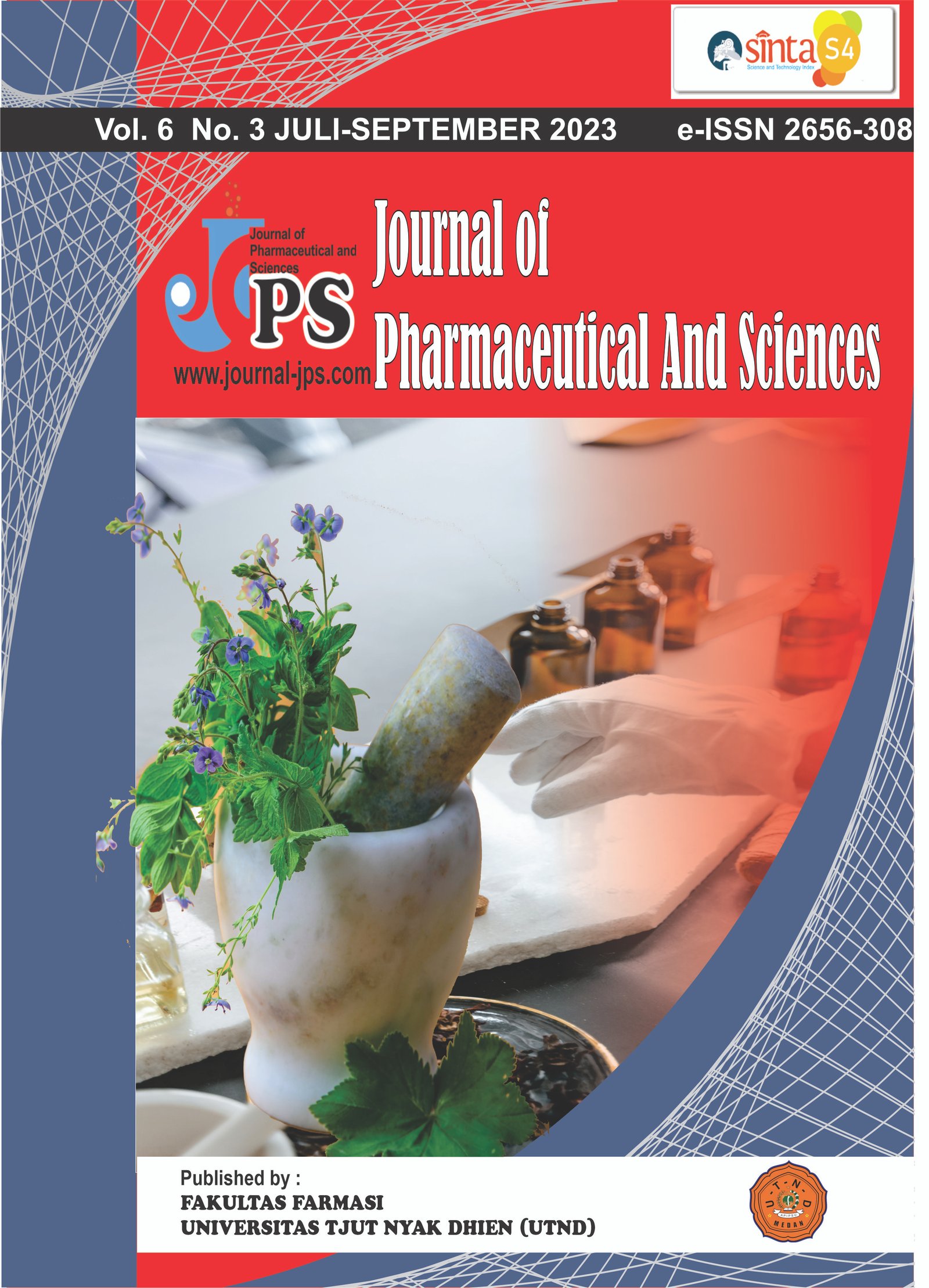Quality of Lamb Meat Based on Diversity, Quantity, and Bacterial Contamination in the Traditional Market of Klambir V Village, Hamparan Perak Sub-district, Deli Serdang Regency
Main Article Content
Page: 1178-1186
Abstract
Meat is an essential food ingredient in meeting nutritional needs. The purpose of this research is to detect the total plate count and bacterial contamination in lamb meat. The research method used in this study is descriptive because it describes the characteristics of a population or a phenomenon that is being studied in a trial and error manner. From the observation data, 6 samples of lamb meat obtained from the traditional market in Kampung Lalang were analyzed using descriptive methods, which revealed the presence of Escherichia coli and Salmonella sp bacteria. The highest TPC analysis value was found in vendor 2 and vendor 3, sample 2, with a count of 6.55x106 cfu/g and 7.15x106 cfu/g, respectively, while the lowest contamination was found in vendor 1, sample 2, with a count of 4.57x105 cfu/g. These values are in accordance with the permissible limits of Escherichia coli (1 x 101 colonies/gram) and Salmonella sp (negative/25 grams) as set by the Indonesian National Standards (SNI). The results of the study indicate that 6 samples of lamb meat were not contaminated with Escherichia coli and Salmonella sp bacteria, demonstrating that the lamb meat sold in the traditional market of Klambir V Village complies with the Indonesian National Standards (SNI) and is suitable for consumption.
Downloads
Article Details

This work is licensed under a Creative Commons Attribution-NonCommercial-ShareAlike 4.0 International License.
References
Anggraeni, D.M., 2012. Uji Disinfeksi Bakteri Escherichia Coli Menggunakan Kavitasi Water Jet. Skripsi Universitas Indonesia, Depo.
Arief M., Nur F. Dan Sri S. 2014. Pengaruh Pemberian Probiotik Berbeda Pada Pakan Komersial Terhadap Pertumbuhan dan Efisiensi Pakan Ikan Lele Sangkuriang (Claris Sp.). jurnal ilmiah perikanan dan kelautan, 6 (1): 1-5 hal.
Badan Pusat Statistik (BPS). 2022 Jumlah Penduduk Indonesia
Badan Standar Nasional. 2009. SNI 7388 : 2009 tentang Batas Maksimum cemaran Mikroba dalam pangan. Dapartemen Pertanian, Jakarta.
Dwidjoseputro. 2005. Dasar-Dasar Mikrobiologi.Yogjakarta: Djambatan.
Hidayat, R. dan Alhadi, F. 2012. Identifikasi Streptococcus Equi dari Kuda yang diduga Menderita Strangles. Jurnal Ilmu Pertanian Indonesia, 17(3): 199-203.
Lukman, D.W. 2009. Higiene Pangan. Fakultas Kedokteran Hewan. Institut Pertanian Bogor. Bogor.Mansauda, K. L. R., Fatimawali.
Migeemanathan S, Bhat R, Min-Tze L, Wan-Abdullah WN. Effects of temperature abuse on the survival, growth and inactivation of Salmonella Typhimurium in goat milk. Foodborne Pathogens and Disease. 2011, 8: 1235-1240.
Rahayu, W. P., Nurjanah, dan Komalasari, E. 2018. Escherichia coli: Patogenesis, Analisis dan kajian Resiko. IPB Press. Kota Bogor.
Samudra IWGA, Ariana INT, Lindawati SA. 2016. Evaluasi Daya Simpan Daging dari Sapi bali yang digembalakan di area TPA Desa Pedungan, Denpasar Selatan. Peternakan Tropika 4(3): 685-700 .
Strohl WA, Rouse H, Fisher BD. 2001. Microbiology. USA: Lippincott Williams & Wilkins.
Sugioto, Kusuma A, dan Veronica W. 2015. Kandungan Mikroba Pada Daging Sapi.
Suryanika, 2013. Status Mikrobiologi Daging Sapi di Pasar – Pasar Tradisional Kota Bandar Lampung dan Metro. Skripsi. Fakultas Pertanian. Universitas Lampung. Lampung.Terpadu Vol. 3(2): 27 – 30 Tropika 4(3): 685-700.
United State Departement of Agriculture. 2011. USDA National Nutrient Database for Standart Refrence, Realese 24. Availeble 24 from: http://www.usda.gov./ba/bhnrc/ndl. (Diakses 13 Desember 2019).
Wahyu Dwi Atmiati. (2012). Faktor-faktor Yang Berhubungan Dengan Keberadaan Bakteri Escherichia coli Pada Jajanan Es Buah Yang Dijual Di Sekitar Pusat Kota Temanggung. Jurnal Kesehatan Masyarakat. Volume 1.Nomor 2. Tahun 2012. Halaman 1047-1053.





